Alligators
Alligators are found primarily in the southeastern United States. They are normally pretty timid and in most cases will attempt to escape if approached. However, their skill at remaining motionless for extended periods and their ability to camouflage themselves can make it possible to stumble across them accidentally.
They are quick moving over short distances and have an incredibly powerful bite perfect for cracking open turtle shells. Like most animals, they can also be aggressive if they feel that their young are threatened. You should always remain a safe distance from these large reptiles and never provoke them.
- Size: 440–770 lbs
- Range: Southeastern U.S.
Cougars
Also known as pumas, mountain lions, panthers, and catamounts, these big cats can be ferocious fighters and live across the western United States. However, they do not see humans as prey, so attacks are extremely uncommon. Across the whole of North America, there have only been 88 recorded attacks and 20 fatalities since 1890.
Cougars that are starving for food are the most likely to attack. Juveniles who are searching out new territory can also be aggressive. These cats typically attempt to subdue their prey with a bite to the neck.
In the event of an encounter with an aggressive cougar, it is important to be loud and assertive. Look at the animal but avoid direct eye contact so as not to appear aggressive. Do make loud noises and try to appear as large as possible by opening your jacket. Throw sticks and stones in its direction (but not directly at it) to scare it off. Do not behave passively or try to play dead.
- Size: 64–220 lbs
- Range: All of U.S. (but much more common in western and central states)
Coyotes & Wolves
Coyotes are also able to mate with domestic dogs, producing “coydogs,” which are canines that have the predatory instincts of a coyote but may have less fear of humans, which can be a dangerous combination.
More of a threat to livestock than humans, coyotes and coydogs should be treated with respect and distance.
Wolves can behave aggressively towards people, but U.S. attack numbers are low, although they have increased in recent years. It is important to note that wolves are naturally afraid of humans, so attacks don’t happen very often.
Coyotes
- Size: 15–44 lbs
- Range: All of U.S.
Wolves
- Size: 82–88 lbs (average)
- Range: Forrested and mountainous areas in northern U.S.
Spiders
The two most venomous spiders in the U.S. are recluse spiders and widows. Despite its small size, the brown recluse is the most dangerous type of spider, with a bite that can develop into a necrotic ulcer capable of leading to gangrene and permanent tissue damage if untreated. This spider is also sometimes referred to as a “fiddle-back” because of the violin-shaped mark on its abdomen.
There are numerous species of widow spiders that live in the U.S. The black widow is the most notorious, given its recognizable markings and the dangerous bite of the female (as well as her habit of eating the male after mating with him). Thanks to anti-venom, the bite is not often fatal if medical treatment is sought out quickly.
Recluses
- Size: .5–1.5 inches (with legs)
- Range: Southern central U.S.
Bears
Bears have a ferocious reputation, but like other wild animals, they are unlikely to attack unless provoked, protecting their young, or starving. Usually, they will run away or stage mock charges. If you are unlucky enough to be attacked by a bear, you should fight back—not submit or play dead.
There are two main species to be found in the U.S.: brown bears (grizzlies) and black bears. Brown bears were once common, but population numbers have declined, and they are now only found in Alaska, Idaho, Montana, Washington, and Wyoming. Grizzlies are larger and more aggressive than black bears. They are especially dangerous because they have an exceptionally strong bite that is said to be powerful enough to crush a bowling ball.
Black bears are far more widespread and common than brown bears. Although they generally prefer to stay in forested areas, they can come into populated areas in search of food. Despite their name, black bears vary in color and aren’t necessarily black.
- Size: 90–500 lbs
- Range: Many parts of U.S.
10. Sharks, Stingrays, and Portuguese Man O’ War
Shark attacks are rare but have resulted in fatalities in a number of cases.
Out in the oceans, there are a number of dangerous creatures to be aware of. Sharks have a ferocious reputation and are certainly capable of causing great harm, but it should also be noted that the number of shark attacks across the U.S. only averages around 16 each year, with some years seeing no fatalities. The three most dangerous species of sharks, which are responsible for the most attacks on people, are great white sharks, tiger sharks, and bull sharks.
In the Gulf of Mexico, there are a number of stingray species that rest underwater on sand and rocks. They won’t attack you, but if you stand on one by accident, they can strike with their barbed tails, which inflict a poisonous sting.
Another sea creature to be aware of is the Portuguese man o’ war. It looks similar to a jellyfish but is actually a colony of minute, interconnected organisms called zooids. Its venomous tentacles are capable of delivering an extremely painful sting.
Bull, Tiger, and White Sharks
Bull Shark
- Size: 200–500 lbs in adults
- Range: Coastal regions
Tiger Shark
- Size: 200–2400 lbs
- Range: Coastal regions
White Shark
- Size: The Great White Shark is the largest predator fish in the world and is well known for its bite force of 18,216 newtons. If it is the largest predator. This shark weight ranges from 1,200 – 2,400 lbs (Adult). The size ranges from 15 – 21 ft. (Female, Adult), 11 – 13 ft. (Male, Adult).
- Range: Great white sharks live in almost all coastal and offshore waters which have water temperature between 12 and 24 °C (54 and 75 °F), with greater concentrations in the United States (Northeast and California), South Africa, Japan, Oceania, Chile, and the Mediterranean including Sea of Marmara and Bosphorus.
Stingrays 
- Size: Varies by species
- Range: Coastal regions
Portuguese Man O’ War 

- Size: Tentacles can be up to 30 feet long
- Range: Coastal regions
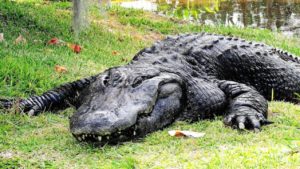



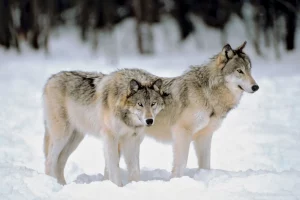
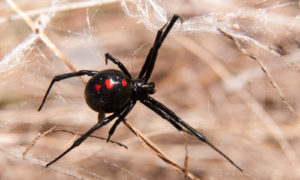
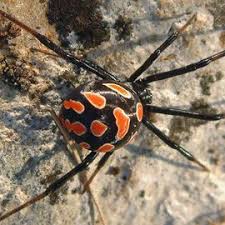
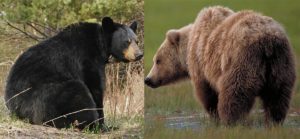
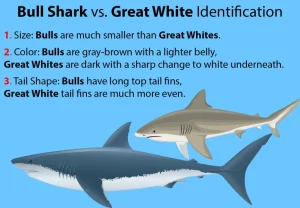


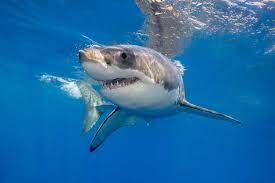
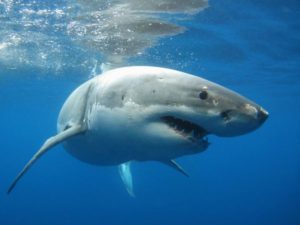
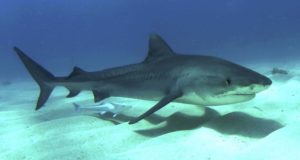
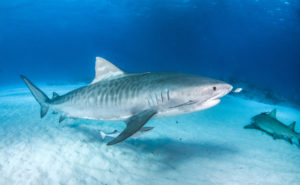 Tiger
Tiger